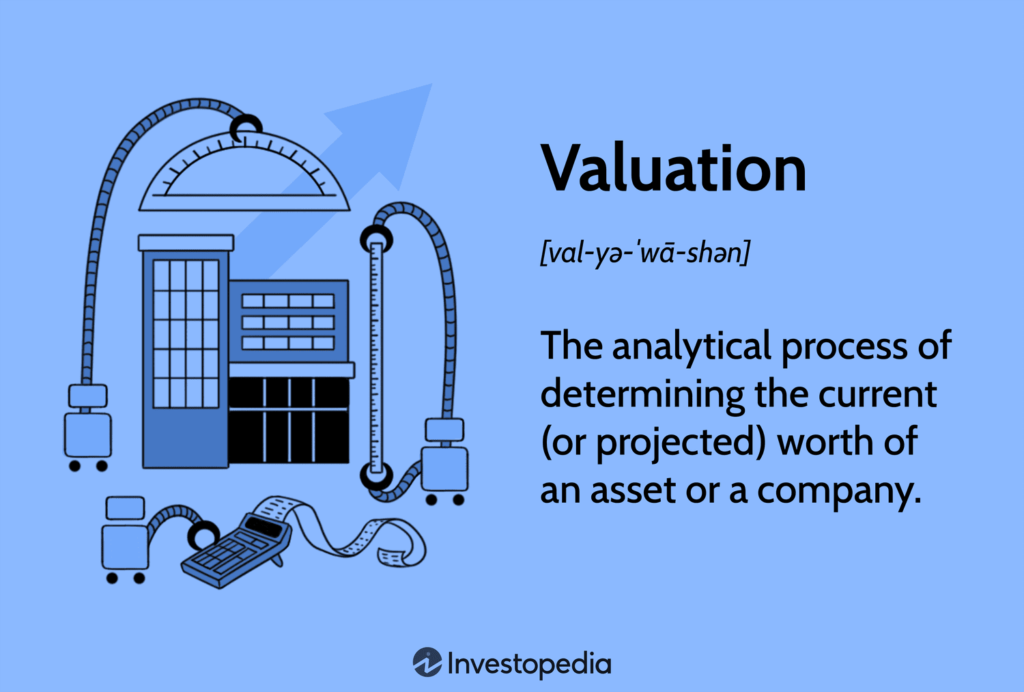Table of Contents
- Introduction to Skillbench Valuation
- The Importance of Empowering Your Finance Team
- How Skillbench Valuation Can Benefit Your Company
- Real-Life Examples of Companies Using Skillbench Valuation Successfully
- Step-by-Step Guide on Implementing Skillbench Valuation in Your Finance Team
- Tips for Ensuring a Smooth Transition to Skillbench Valuation
- Conclusion: Enhancing Financial Analysis and Decision-Making with Skillbench Valuation
- FAQs:
Introduction to Skillbench Valuation
skillbench valuation: In today’s agility-struck and competitive corporate world, making the right financial resolutions is one of the most critical aspects. Here is where Skillbench Valuation comes into the picture. Picture a solution that enhances your valuation procedures and enables your finance department to use data effectively while expanding the company.
Skillbench Valuation thus helps organizations elevate their financial evaluation from just looking at figures to telling a story that is based on insightful analysis of the figures involved. With the ever-evolving industry landscape where organizations face challenges such as market variations, and regulatory changes, an effective valuation strategy will always be an important tool.
This prevents amateurism and ensures that every decision taken is based on facts and thorough analyses. From startups to large corporations, the understanding of the changing scope of operations with the inclusion of Skillbench Valuation will give one a competitive edge in the market. Let’s look at this from a different perspective; allow us to explain why providing your finance team with this excellent tool can be revolutionary for your organization.
The Importance of Empowering Your Finance Team
Empowering your finance team isn’t just important; it’s a necessity if any organization has ambitions for growth. A capable finance department is at the heart of sound and strategic decisions. When employees are given the power to make decisions, they feel accountable for their roles. As a result, accountability goes up, and performance improves. Better yet, employees working in empowered teams are more able and more willing to confront difficult financial and business problems and initiate solutions.
In addition, ensuring that your finance team has the right tools brings positive attention. They are able to synthesize data and present insights without limitation. This not only boosts teamwork but also ensures that finance functions are integrated into the broader business strategies.
Making investments in the development of skills establishes and nurtures continuous enhancement in workplace culture. It follows that as the team develops, its capacity to add value to the organization’s ambitions also increases. An empowered finance team also manages risks while enabling the organization to achieve long-term growth.
How Skillbench Valuation Can Benefit Your Company

Skillbench Valuation changes the landscape in how financial valuation is approached. With its advanced analytics, it also provides the particulars of the asset’s value as well as performance metrics. This tool ensures that your finance team is able to act swiftly in making decisions. Better data visualization helps in breaking down the information for ease of understanding by different stakeholders.
There is also an ease in reporting processes with the deployment of Skillbench Valuation. When automation comes into play, there is a decreased focus on manual calculations and this shifts the focus of your team from operational details to strategy. In addition, the scope of Skillbench’s functionality allows it to be easily integrated into any existing solution. It customizes its recommendations to the particular company or industry.
So what does this lead to? Accuracy in forecasting and financial metrics are more geared towards the business metrics. There are thus enhanced investment strategies and greater confidence in the decision-making processes of the organization.
Real-Life Examples of Companies Using Skillbench Valuation Successfully
Many companies have applied Skillbench Valuation to boost their financial offers. A mid-sized technology firm, for instance, utilized the tool, increasing forecasting accuracy levels by up to thirty percent. They were able to make more rational evaluations as they made such judgments in consideration of what was happening in the market.
The organization has another milestone towards becoming a leader in this segmentation after focusing on improving its resource allocation, which had been one of its major challenges in the past. Adopting Skillbench Valuation, they enhanced asset utilization figures by more than twenty five percent. Such change enabled them to improve their production scheduling and cut waste to the bare minimum.
As for the retail tire manufacturer, the use of Skillbench Valuation has optimized the budgeting process for the company. The finance team was able to reduce the time spent on data analysis by automating some of the key metrics, thus enhancing response times in the busy seasons. Each of these case studies further substantiates that there are positive outcomes whenever this particular valuation methodology is adopted by the organizations in question.
Step-by-Step Guide on Implementing Skillbench Valuation in Your Finance Team
Initiate the task with a review of your existing financial processes. Consider the gaps and where Skillbench Valuation can be applied in the short term. This preparation will help you define your implementation plan more precisely. Next, ask your finance team to attend the first workshop. Explain the core concepts of Skillbench Valuation to them. Let them speak about how it can affect their everyday activities.
When you get everyone’s consent, it is time to choose the first project. Such a method will allow you to see how the tool can work together with all existing processes and allow you to introduce it to the team in a gradual manner.
Repeat everything you have said so far. Ensure that this person has at least two years of experience as a sales representative or consultant, otherwise, you will not transform into a legitimate meme. During all of this, also educate and do not forget about support. Local responses should focus on establishing numerical targets for individual activities, rather than just the overall goal.
After that, ask your team about their impressions of Skillbench Valuation in practice. Do not hesitate to do so in order to utilize these recommendations to refine your finance department’s implementation strategies and to grow acceptance rates.
Tips for Ensuring a Smooth Transition to Skillbench Valuation
Adopting Skillbench Valuation is not an easy process and there is a need to draw up a plan of how to approach its implementation. Go ahead and include your finance department at this early stage. There is a good chance that they can provide valuable information on the current structure and what may work in the future.
The next thing will be proper internal communication strategies. There is a need to give regular updates on the progress of the system so that users do not feel left out. Urge people to ask questions; responding to such issues in good time can help in building trust.
Focus on training applications since they are key to the success of the shift. Schedule practice sessions involving the Skillbench Valuation so that when it is time to roll it out, your finance employees are well-practiced and familiar with the tools.
Post-launch, several activities need to be done regularly. Feedback should also be solicited regularly so that proper action is taken should any corrections be required. But in between all this, do not let the small wins go unnoticed! Acknowledging achievements doesn’t just boost morale; they also engender a positive outlook towards the adoption of Skillbench Valuation in the business processes of the organization.
Conclusion: Enhancing Financial Analysis and Decision-Making with Skillbench Valuation
Skillbench is more than a solution; it’s a paradigm shift in how finance teams want to engage with analytical tools. Skillbench provides timely and precise data insights for the organization so that it can make the right decisions for growth.
Using such a novel technique improves cross-functional engagement and enhances the overall efficiency of the finance team. Companies using Skillbench valuation have also shown noticeable improvements in financial analyses and corporate planning overall as case studies have shown.
Although transitioning to this system may appear cumbersome at first, with the appropriate procedures and tactics, it can lead to accolades, and what is truly remarkable, the approximate outcomes are the same. It is easier to focus on the numerous advantages of implementation.
Incorporating Skillbench valuation in financial dealings transforms the entire organization for the better. This is an investment that not only changes the perception of numbers but also ensures the organization is well-placed for any change in the market.
FAQs:
What is Skillbench valuation?
It’s a method to assess the value of skills in a business.
Why is Skillbench valuation important?
It helps businesses identify skill gaps and improve performance.
How does Skillbench valuation work?
It evaluates employee skills and their impact on company success.
Who uses Skillbench valuation?
Companies and HR professionals use it to optimize talent.
